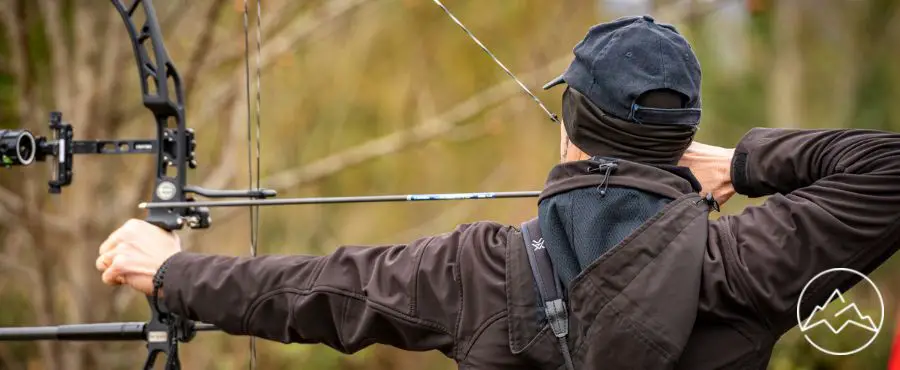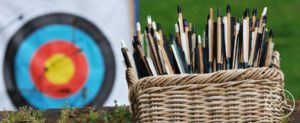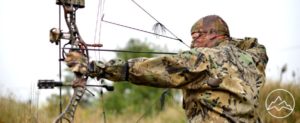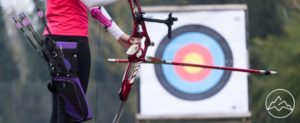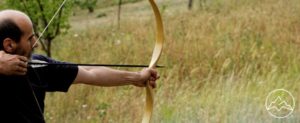Brace height, the distance between the string and grip of a bow, plays a pivotal role in achieving accuracy and speed in archery. It is a crucial factor that archers must consider to optimize their shooting performance. On one hand, a shorter brace height results in faster arrow speeds, enhancing the overall velocity of the shot. On the other hand, longer brace heights provide more forgiveness, minimizing the risk of the bowstring slapping the forearm. The adjustment of brace height can be done by twisting or untwisting the bowstring, but professional assistance may be necessary for compound bows. While beginners should adhere to the brace height recommended by the manufacturer, experienced archers can experiment with different brace heights to suit their personal preference, skill level, and intended use. By understanding the factors and effects of brace height, archers can fine-tune their equipment to optimize accuracy and speed.
Key Takeaways
- Brace height is a measurement of the distance between the string and grip of a bow.
- Brace height affects arrow speed, with shorter brace heights resulting in faster arrow speeds.
- Longer brace heights compensate for minor mistakes made by the archer upon release and decrease the chance of the bowstring slapping the forearm.
- The right brace height depends on personal preference, intended use, skill level, and confidence.
What is it?
Brace height, as previously discussed, refers to the measurement of the distance between the string and grip of a bow, and it plays a crucial role in determining the accuracy and speed of the bow. The importance of brace height in archery cannot be overstated. It directly affects arrow speed, with shorter brace heights resulting in faster arrow speeds. However, there are common misconceptions about brace height. Some believe that shorter brace heights always lead to better performance, but this is not necessarily true. While shorter brace heights do increase arrow speed, they also result in increased energy transfer and vibration, making the bow louder and potentially less forgiving. Longer brace heights, on the other hand, compensate for minor mistakes made by the archer upon release, improving accuracy. Thus, finding the right brace height is a balancing act that depends on personal preference, intended use, skill level, and confidence.
Factors and Effects
One key factor to consider when optimizing the performance of a bow is the measurement that determines the distance between the string and grip, known as brace height. It is important to understand the relationship between brace height and bowstring slap, as well as the impact of brace height on energy transfer and vibration levels.
Factors and Effects:
- Bowstring Slap: A shorter brace height increases the chance of the bowstring slapping the archer’s forearm upon release. This can cause discomfort and potentially lead to injury. Longer brace heights decrease this risk.
- Energy Transfer and Vibration: Shorter brace heights result in increased energy transfer and vibration. This can make the bow louder and potentially affect accuracy. Longer brace heights reduce energy transfer and vibration, leading to a smoother and quieter shot.
Understanding these factors and effects of brace height is crucial for archers to optimize their bow’s performance and achieve accuracy and comfort while shooting.
Adjusting and Optimizing
To optimize the performance of a bow, it is important to understand the process of adjusting and optimizing the brace height measurement, as it can have a significant impact on various aspects of archery. Techniques for adjusting brace height involve twisting or untwisting the bowstring, which can shorten or lengthen it and thereby increase or decrease the brace height. This adjustment affects the arrow trajectory, with lower brace heights generally resulting in a flatter trajectory and higher brace heights causing a more pronounced arc. By experimenting with different brace heights, archers can find the optimal balance between speed and accuracy for their specific bow and shooting style. It is important to note that the impact of brace height on arrow trajectory may vary depending on other factors such as arrow weight, draw length, and bow design.
Frequently Asked Questions
How does brace height affect the sound produced by the bow?
The distance between the string and grip of a bow, known as brace height, plays a crucial role in the sound produced by the bow. Brace height affects sound production through various factors, such as energy transfer and vibration. Shorter brace heights tend to result in louder sounds due to increased energy transfer and vibration. On the other hand, longer brace heights can reduce the chance of the bowstring slapping the forearm, resulting in quieter sounds.
Can adjusting the brace height affect the draw weight of the bow?
Adjusting the brace height of a bow does not directly affect the draw weight of the bow. The draw weight is determined by the limbs and the design of the bow. However, changing the brace height can indirectly affect the arrow trajectory by altering the relationship between brace height and arrow spine. A higher brace height can result in a more forgiving shot, reducing the impact of minor errors in form and release. This can lead to improved arrow flight and accuracy.
Is there a recommended brace height for different types of archery (e.g., target shooting, hunting)?
Different types of archery, such as target shooting and hunting, have varying recommended brace heights. The brace height significantly impacts arrow trajectory, making it crucial to consider when choosing a bow for a specific purpose. For target shooting, a longer brace height is generally recommended to enhance forgiveness and accuracy. On the other hand, for hunting, a shorter brace height may be preferred to maximize arrow speed and penetration. It is important for archers to understand the specific requirements of their chosen discipline and experiment with different brace heights to find the optimal setting for their needs.
Are there any safety considerations when adjusting the brace height of a bow?
Safety precautions when adjusting brace height are important to prevent potential injury. Improper brace height can lead to various problems, such as increased risk of the bowstring slapping the forearm or causing discomfort to the archer. To ensure safety, it is recommended to seek professional assistance, especially for compound bows. Additionally, understanding the process of adjusting brace height and following manufacturer guidelines is crucial. Care should be taken to avoid over-tightening or loosening the bowstring, as it can affect the bow’s performance and potentially cause injury.
Can using a string silencer affect the brace height or its effects on accuracy and speed?
Using a string silencer can have an impact on the brace height of a bow, as well as its effects on accuracy and speed. For example, when a string silencer is added to a bow, it can increase the overall weight of the string, causing a slight decrease in brace height. This decrease in brace height may result in a slightly faster arrow speed. However, it is important to note that the effect of a string silencer on accuracy and speed is generally minimal. The primary purpose of a string silencer is to reduce noise and vibration, rather than significantly altering brace height or overall bow performance.
Conclusion
In conclusion, brace height is a critical aspect of archery that significantly influences accuracy and speed. It refers to the distance between the string and grip of a bow and can be adjusted by twisting or untwisting the bowstring. Different brace heights have various effects, with shorter brace heights resulting in faster arrow speeds and longer brace heights providing more forgiveness. Finding the optimal brace height for an individual’s skill level and intended use is essential. So, remember to experiment and explore different brace heights to enhance your shooting experience and performance.

